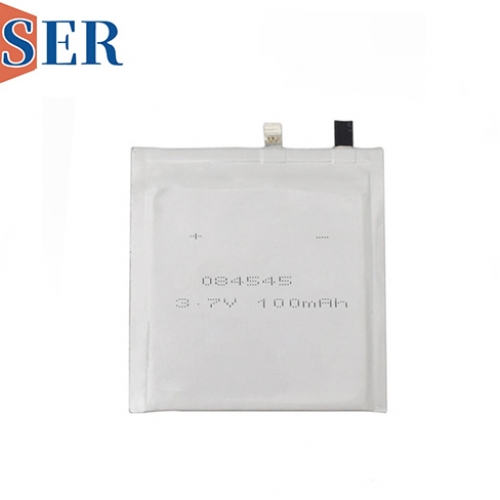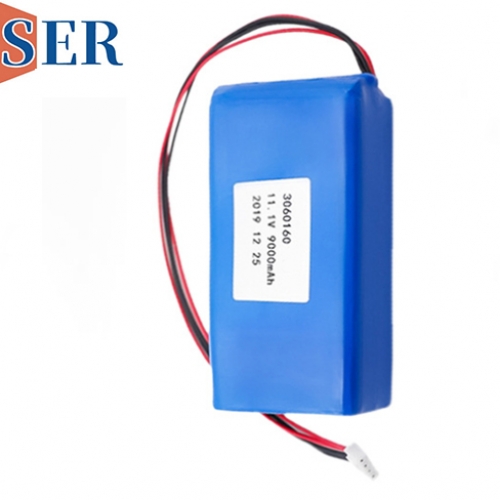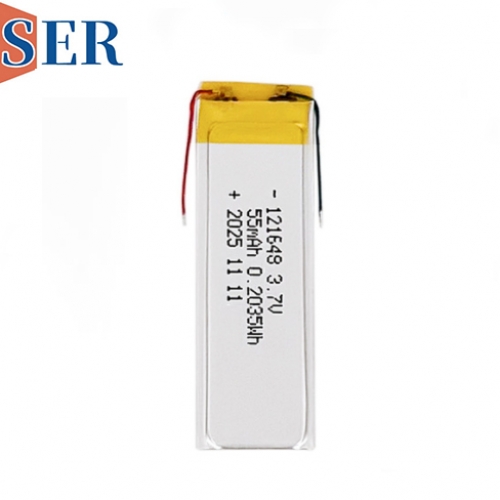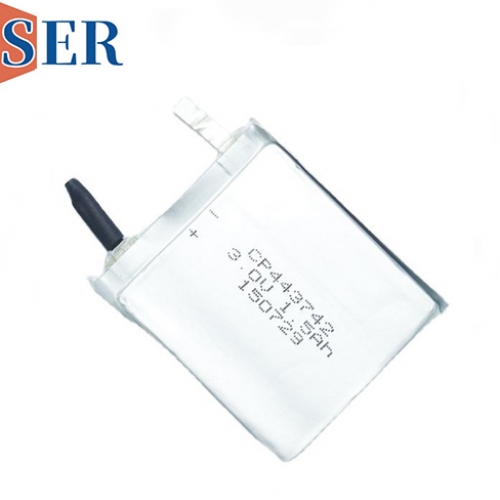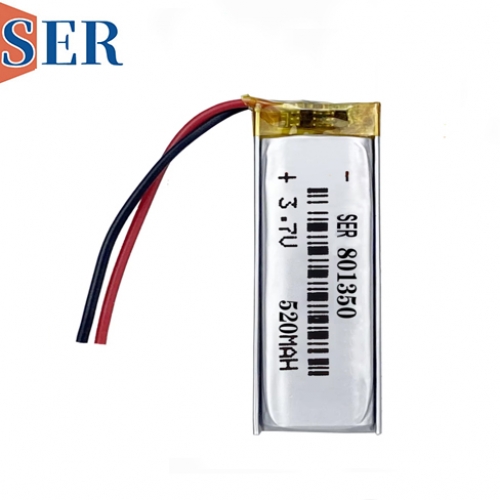LP701240 Customized Narrow and Long Strip-shaped Rechargeable Li Polymer Battery for Compact Electronic Devices
LP701240 Customized Narrow and Long Strip-shaped Rechargeable Li Polymer Battery for Compact Electronic Devices
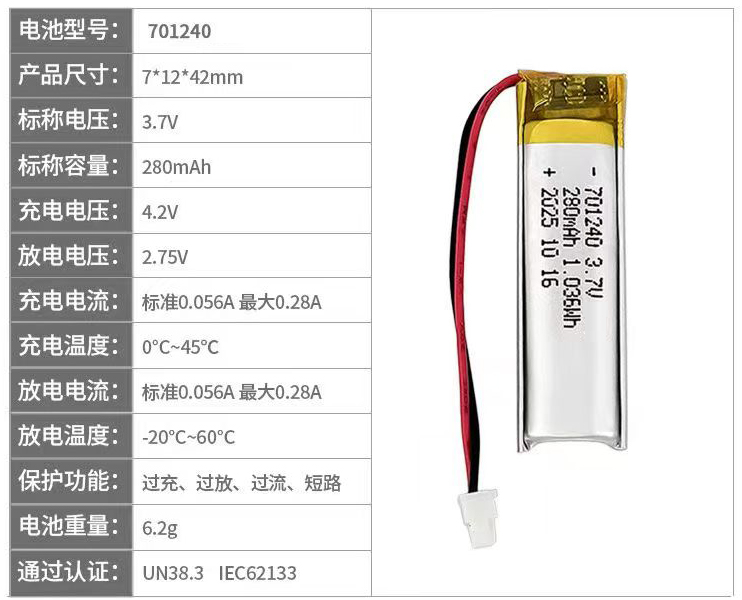
1. Introduction
In the rapidly evolving landscape of compact electronic devices, the demand for power solutions that combine high performance, miniaturization, and reliability has never been more pressing. From smart wearables that monitor health metrics in real time to miniaturized sensors deployed in industrial IoT (Internet of Things) systems and portable medical gadgets that deliver life-saving functionality, each device requires a battery that can fit within its limited spatial constraints while providing consistent and long-lasting power. The LP701240 customized narrow and long strip-shaped rechargeable Li polymer (Lipo) battery emerges as a tailored response to this demand, redefining the standards for power storage in small-form-factor electronics.
This article delves into every aspect of the LP701240 Lipo battery, from its core design and technical specifications to its diverse applications, inherent advantages over traditional battery technologies, manufacturing processes, quality control measures, and future prospects. By exploring the unique features and capabilities of this battery, we aim to highlight its significance in enabling the next generation of compact electronic devices and its role in addressing the key challenges faced by designers, engineers, and manufacturers in the electronics industry.
2. Understanding the LP701240: Design and Dimensional Significance
The LP701240 battery’s model number is not merely a random sequence of digits; it is a precise indicator of its physical dimensions, a critical factor in its ability to integrate seamlessly into space-constrained devices. The model number “701240” breaks down into three key measurements, all expressed in millimeters (mm): approximately 7.0mm in thickness, 12mm in width, and 40mm in length. This ultra-slim, elongated design is the result of meticulous engineering, tailored to meet the specific needs of devices where every millimeter of space counts.
2.1 Thickness: The Key to Ultra-Slim Integration
At just 7.0mm thick, the LP701240 stands out as one of the slimmest rechargeable Li polymer batteries in its category. This ultra-thin profile is a game-changer for devices such as smart watches, fitness bands, and thin-film sensors, where reducing overall device thickness is a top priority for both aesthetics and user comfort. Traditional cylindrical or prismatic batteries often have a minimum thickness that exceeds 10mm, making them incompatible with devices that require a sleek, low-profile design. The LP701240’s 7.0mm thickness allows it to be embedded within the casing of such devices without adding unnecessary bulk, ensuring that the end product remains lightweight and easy to wear or carry.
2.2 Width and Length: Enabling Narrow and Long Form Factors
With a width of 12mm and a length of 40mm, the LP701240 adopts a narrow and long strip shape that is ideal for devices with linear or elongated internal layouts. For example, in portable medical devices like glucose monitors or small diagnostic tools, the internal space is often designed to accommodate components in a linear arrangement, and a narrow battery can fit alongside other critical parts such as circuit boards and sensors without crowding the space. Similarly, in miniaturized IoT sensors used for environmental monitoring or asset tracking, the long strip shape allows the battery to be placed along the edge of the sensor housing, maximizing the available space for other components like antennas or data storage modules.
2.3 Customization Potential: Beyond the Standard Strip Shape
While the LP701240 is designed as a narrow and long strip by default, one of the key advantages of Li polymer battery technology is its flexible form factor, which enables further customization beyond the standard dimensions. Manufacturers can adjust the length, width, and even the shape of the battery to meet the unique requirements of specific devices. For instance, if a smart wearable has a curved design, the LP701240 can be modified into a slightly curved strip to follow the device’s contour, ensuring a perfect fit. This level of customization is not possible with traditional battery technologies like lithium-ion cylindrical batteries, which have fixed shapes and sizes, limiting their ability to adapt to non-standard device designs.
3. Technical Specifications: Power, Voltage, and Performance
Beyond its physical design, the LP701240’s technical specifications are equally impressive, ensuring that it delivers stable, reliable power to support the daily operation of low-to-medium power-consuming devices. Let’s break down the key technical parameters and their implications for device performance.
3.1 Nominal Voltage: 3.7V for Compatibility and Efficiency
The LP701240 has a nominal voltage of 3.7V, a standard voltage level for Li polymer batteries and one that is widely compatible with the majority of low-to-medium power electronic devices. This voltage level is optimal for powering components such as microcontrollers, sensors, small displays, and wireless communication modules commonly found in smart wearables, IoT sensors, and portable medical gadgets.
Most electronic devices are designed to operate within a voltage range of 3.3V to 4.2V, and the LP701240’s 3.7V nominal voltage falls perfectly within this range, eliminating the need for additional voltage regulators or converters. This not only simplifies the device’s circuit design but also reduces power loss, as voltage conversion processes often waste a small percentage of energy. As a result, the LP701240 ensures that more of its stored energy is used to power the device’s functionality, rather than being lost to unnecessary components.
3.2 Capacity: 280mAh for Long-Lasting Operation
The LP701240 offers a capacity of 280mAh, a measure of the amount of charge the battery can store and deliver over time. For low-to-medium power-consuming devices, this capacity is more than sufficient to support daily operation. Let’s put this into perspective with real-world examples:
Smart Fitness Band: A typical smart fitness band consumes around 10-15mAh of power per day, depending on usage (e.g., heart rate monitoring, step counting, sleep tracking). With a 280mAh capacity, the LP701240 can power the fitness band for approximately 18-28 days on a single charge, reducing the frequency of recharging and improving the user experience.
Miniaturized IoT Sensor: An IoT sensor used for temperature or humidity monitoring typically consumes 5-8mAh per day, as it only transmits data periodically. The LP701240’s 280mAh capacity can power such a sensor for 35-56 days, making it ideal for remote or hard-to-access locations where frequent battery replacement is impractical.
Portable Medical Gadget: A small portable medical device like a pocket-sized blood pressure monitor may consume 20-30mAh per use. With a 280mAh capacity, the battery can support 9-14 uses before needing to be recharged, ensuring that the device is available when needed in emergency situations.
It is important to note that the actual battery life may vary depending on factors such as device usage patterns, operating temperature, and the efficiency of the device’s power management system. However, the LP701240’s 280mAh capacity provides a solid foundation for long-lasting device operation, a key requirement for users who rely on their electronic devices for critical tasks.
3.3 Charge and Discharge Performance: Stability and Durability
The LP701240’s charge and discharge performance is another critical aspect of its technical capabilities. Li polymer batteries are known for their stable charge-discharge cycles, and the LP701240 is no exception. It can withstand hundreds of charge-discharge cycles without a significant loss in capacity, ensuring long-term reliability.
The battery’s charge voltage typically ranges from 3.0V (cut-off voltage during discharge) to 4.2V (full charge voltage), a standard range for Li polymer batteries. This allows it to be charged using standard Li polymer battery chargers, which are widely available and compatible with most electronic devices. The charging time for the LP701240 depends on the charger’s current output; for example, a 50mA charger will take approximately 5-6 hours to fully charge the battery, while a 100mA charger can reduce the charging time to 2-3 hours. This flexibility in charging options makes it easy for users to recharge the battery using existing chargers, enhancing convenience.
In terms of discharge performance, the LP701240 delivers a stable current output throughout its discharge cycle, ensuring that the device receives a consistent power supply. This is particularly important for devices that require a steady power input to function correctly, such as sensors that need to maintain accurate readings or medical devices that must deliver precise measurements. The battery’s low self-discharge rate is another advantage; when not in use, it loses only a small percentage of its charge per month, ensuring that the device is ready to use even after being stored for an extended period.
4. Advantages of Li Polymer Technology: Why the LP701240 Stands Out
The LP701240’s performance and design are closely tied to the inherent advantages of Li polymer battery technology, which sets it apart from traditional battery technologies like lithium-ion (Li-ion) cylindrical batteries, nickel-cadmium (Ni-Cd) batteries, and nickel-metal hydride (Ni-MH) batteries. Let’s explore these advantages in detail and how they contribute to the LP701240’s appeal.
4.1 Lightweight Construction: Reducing Device Weight
One of the most significant advantages of Li polymer batteries is their lightweight nature. Li polymer batteries use a solid or gel-like electrolyte instead of the liquid electrolyte found in traditional Li-ion cylindrical batteries. This eliminates the need for a heavy metal casing to contain the liquid electrolyte, resulting in a battery that is significantly lighter.
The LP701240, thanks to its Li polymer construction, weighs only a few grams—typically between 5-8 grams, depending on the exact customization. This is a stark contrast to Ni-Cd or Ni-MH batteries of similar capacity, which can weigh 10-15 grams, and Li-ion cylindrical batteries, which can weigh 8-12 grams. For devices like smart wearables or portable medical gadgets, where weight is a critical factor for user comfort, the LP701240’s lightweight design is a major benefit. A lighter battery reduces the overall weight of the device, making it more comfortable to wear for extended periods or easier to carry in a pocket or bag.
4.2 Flexible Form Factor: Adapting to Custom Device Designs
As mentioned earlier, the flexible form factor of Li polymer batteries is a key advantage, and the LP701240 leverages this to the fullest. Unlike cylindrical Li-ion batteries, which have a fixed cylindrical shape, or prismatic Li-ion batteries, which have a rigid rectangular shape, Li polymer batteries can be manufactured in a wide range of shapes and sizes. This flexibility is made possible by the use of a flexible packaging material (typically a laminate of aluminum, plastic, and other materials) instead of a rigid metal casing.
For the LP701240, this means that it can be customized not only in terms of length, width, and thickness but also in terms of shape. For example, if a device has a curved internal cavity, the LP701240 can be made into a curved strip to fit perfectly. If a device has irregularly shaped spaces, the battery can be cut or molded into a shape that fills those spaces without wasting any room. This level of customization is invaluable for designers and engineers who are constantly pushing the boundaries of device miniaturization and innovation, as it allows them to optimize the use of internal space and create devices with unique and functional designs.
4.3 Excellent Safety Performance: Minimizing Risks
Safety is a top priority for any battery used in electronic devices, especially those that are worn on the body (like smart wearables) or used in medical applications (like portable medical gadgets). Li polymer batteries are known for their excellent safety performance, and the LP701240 is designed to meet the highest safety standards.
The key factors contributing to the LP701240’s safety include:
Solid/Gel Electrolyte: The use of a solid or gel-like electrolyte eliminates the risk of electrolyte leakage, which is a common issue with liquid electrolyte batteries. Leakage can damage the device’s internal components and, in some cases, cause harm to the user.
Thermal Stability: Li polymer batteries have better thermal stability than traditional Li-ion batteries. The LP701240 is designed to withstand a wide range of operating temperatures (typically -20°C to 60°C), and it is less likely to overheat even when used in high-temperature environments or during prolonged charging.
Overcharge and Overdischarge Protection: The LP701240 is equipped with built-in protection circuits that prevent overcharging and overdischarging. Overcharging can cause the battery to overheat, swell, or even catch fire, while overdischarging can damage the battery’s cells and reduce its lifespan. The protection circuits ensure that the battery operates within safe voltage limits, enhancing its overall safety and durability.
Impact Resistance: The flexible packaging of the LP701240 provides better impact resistance than rigid metal casings. In the event of a drop or impact, the flexible packaging is less likely to crack or rupture, reducing the risk of battery failure.
These safety features make the LP701240 an ideal choice for devices where safety is non-negotiable, such as medical devices that are used in close proximity to the human body or smart wearables that are worn by children or adults for extended periods.
4.4 High Energy Density: Maximizing Power in a Small Space
Energy density is a measure of how much energy a battery can store per unit volume or weight. Li polymer batteries have one of the highest energy densities among rechargeable battery technologies, and the LP701240 benefits from this feature. With a high energy density, the LP701240 can store a significant amount of energy (280mAh) in a small and lightweight package, making it ideal for compact devices.
To put this into perspective, let’s compare the energy density of the LP701240 with other battery technologies. A typical Ni-MH battery has an energy density of around 60-100 Wh/kg, while a Li-ion cylindrical battery has an energy density of 150-200 Wh/kg. In contrast, a Li polymer battery like the LP701240 has an energy density of 200-250 Wh/kg. This higher energy density means that the LP701240 can deliver more power per gram of weight, allowing devices to be smaller and lighter without sacrificing battery life.
For example, a smart watch powered by a Ni-MH battery of similar capacity would need to be larger and heavier to accommodate the battery, while the LP701240 allows the smart watch to maintain a slim and lightweight design while still providing long battery life. This high energy density is a key factor in the LP701240’s ability to meet the demands of modern compact electronic devices.
5. Applications of the LP701240: Powering a Wide Range of Compact Devices
The LP701240’s unique combination of ultra-slim design, flexible form factor, stable performance, and excellent safety makes it suitable for a wide range of compact electronic devices across various industries. In this section, we will explore the key applications of the LP701240 and how it addresses the specific power needs of each device type.
5.1 Smart Wearables: Enhancing User Comfort and Functionality
Smart wearables, including smart watches, fitness bands, smart glasses, and health monitors, are among the fastest-growing segments of the electronics industry. These devices are designed to be worn on the body, so they require a battery that is ultra-slim, lightweight, and compatible with their small form factor. The LP701240 is perfectly suited for this application.
Smart Watches: Modern smart watches offer a wide range of features, including heart rate monitoring, GPS tracking, notifications, and even cellular connectivity. These features require a battery that can provide consistent power throughout the day (or longer) while fitting within the watch’s slim casing. The LP701240’s 7.0mm thickness and 280mAh capacity make it an ideal choice; it can power a smart watch for 1-2 days on a single charge (depending on usage) without adding bulk to the watch.
Fitness Bands: Fitness bands are even more compact than smart watches, with a focus on lightweight design and long battery life. The LP701240’s narrow strip shape fits perfectly within the band’s casing, and its 280mAh capacity can power the band for 2-4 weeks, depending on the number of sensors and the frequency of data transmission. This long battery life is a major selling point for fitness band users, who often prefer not to charge their devices frequently.
Health Monitors: Health monitors, such as blood glucose monitors, oxygen saturation monitors, and ECG monitors, are critical for users with chronic health conditions. These devices need to be portable and reliable, and the LP701240’s safety features and stable power output ensure that they function correctly when needed. The battery’s slim design also allows the monitors to be small enough to carry in a pocket or purse, making them accessible for on-the-go use.

